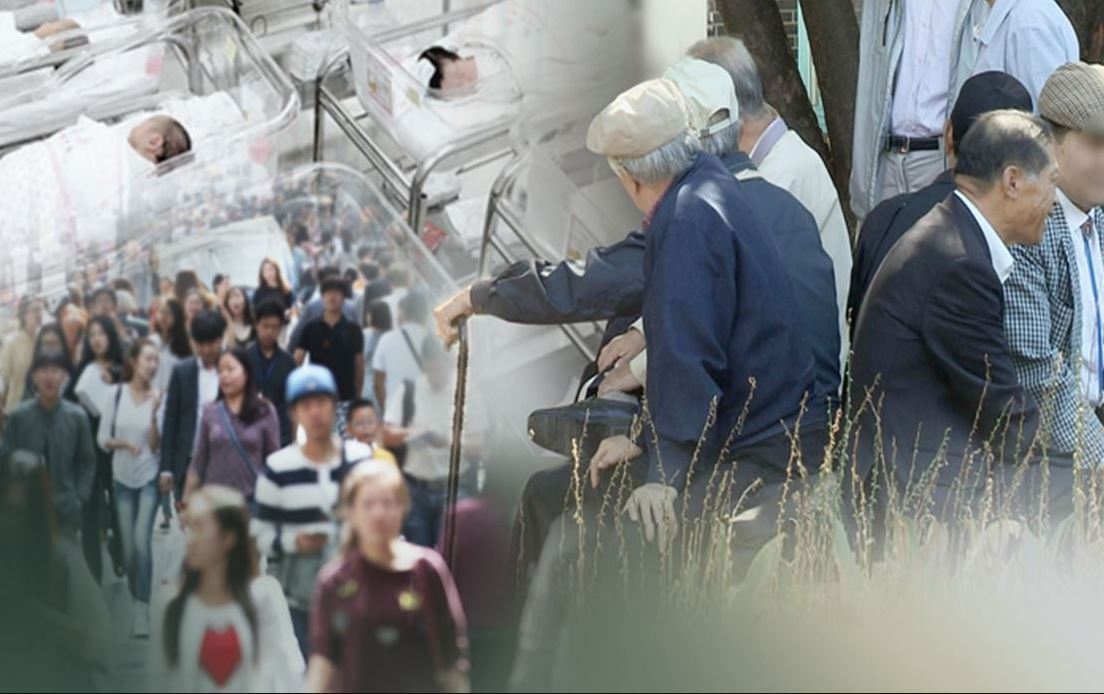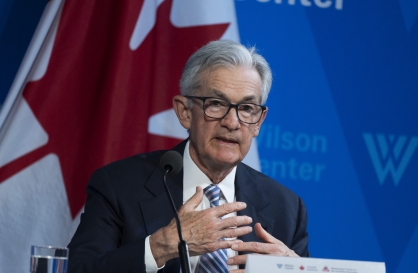Rapidly aging population raises alarm over tax revenues: study
By Choi Jae-heePublished : Jan. 5, 2021 - 14:15

If the aging population continues to rise, the ratio of value-added taxes to the nation’s gross domestic product will sharply drop, raising calls for the government’s tax rises to meet the costs of supporting the economy, a recent study showed Tuesday.
A value-added tax is a type of indirect tax levied on consumption spending on goods and services by the government, with the purpose of raising funds to operate public programs, including construction of social infrastructures or social welfare packages.
“In general, senior residents are less likely to purchase goods that are subject to value-added taxes. So, the current population aging will continue to reduce sources of taxation and tax revenues, dragging down the value-added tax-to-GDP ratio within a country,” said Sung Myung-jae, an economics professor at Hongik University in his study on the impact of a rapidly aging population on tax revenues, released by the Korean Association of Public Finance.
“Economic growth fueled by populations’ income growth has driven up the value-added tax-to-GDP ratio, but currently, the economic recovery momentum is slowing in the wake of virus resurgence, while the country’s aging population is expected to accelerate for years to come.”
Korea’s population has fallen for the first time in history, as births dropped to a record low. The country reported a population of 51.8 million people as of Dec. 31, down 20,838 from a year earlier, while the number of newborns, which remained above 300,000 in 2019, fell 10.6 percent to 275,815 in 2020, the lowest mark ever, according to data from the Ministry of the Interior and Safety.
An overall decrease in private consumption relative to GDP is another driver for shrinking value-added taxes. Local households’ private consumption accounted for 46.1 percent of the country’s nominal GDP last year, sharply down from 48.58 percent in 2019, the study showed.
Sung stressed the importance of higher tax collections to properly manage public finances.
“The government spending is forecast to increase in the coming years either to prepare the unification fund or meet rising demand for social welfare,” he said.
“There is a greater need for the government and related authorities to consider ways to increase revenues by raising tax rates or reducing tax breaks.”
Meanwhile, South Korea’s aging population will continue to hamper the country’s growth as its working-age population shrinks. With the current rate of population decline, the average annual growth of the local economy is expected to slide to 0.4 percent between 2026 and 2035, which marks a significant drop from 1.9 percent projected average annual growth between 2016 and 2025, according to the Bank of Korea.
By Choi Jae-hee (cjh@heraldcorp.com)
A value-added tax is a type of indirect tax levied on consumption spending on goods and services by the government, with the purpose of raising funds to operate public programs, including construction of social infrastructures or social welfare packages.
“In general, senior residents are less likely to purchase goods that are subject to value-added taxes. So, the current population aging will continue to reduce sources of taxation and tax revenues, dragging down the value-added tax-to-GDP ratio within a country,” said Sung Myung-jae, an economics professor at Hongik University in his study on the impact of a rapidly aging population on tax revenues, released by the Korean Association of Public Finance.
“Economic growth fueled by populations’ income growth has driven up the value-added tax-to-GDP ratio, but currently, the economic recovery momentum is slowing in the wake of virus resurgence, while the country’s aging population is expected to accelerate for years to come.”
Korea’s population has fallen for the first time in history, as births dropped to a record low. The country reported a population of 51.8 million people as of Dec. 31, down 20,838 from a year earlier, while the number of newborns, which remained above 300,000 in 2019, fell 10.6 percent to 275,815 in 2020, the lowest mark ever, according to data from the Ministry of the Interior and Safety.
An overall decrease in private consumption relative to GDP is another driver for shrinking value-added taxes. Local households’ private consumption accounted for 46.1 percent of the country’s nominal GDP last year, sharply down from 48.58 percent in 2019, the study showed.
Sung stressed the importance of higher tax collections to properly manage public finances.
“The government spending is forecast to increase in the coming years either to prepare the unification fund or meet rising demand for social welfare,” he said.
“There is a greater need for the government and related authorities to consider ways to increase revenues by raising tax rates or reducing tax breaks.”
Meanwhile, South Korea’s aging population will continue to hamper the country’s growth as its working-age population shrinks. With the current rate of population decline, the average annual growth of the local economy is expected to slide to 0.4 percent between 2026 and 2035, which marks a significant drop from 1.9 percent projected average annual growth between 2016 and 2025, according to the Bank of Korea.
By Choi Jae-hee (cjh@heraldcorp.com)








![[Today’s K-pop] BTS pop-up event to come to Seoul](http://res.heraldm.com/phpwas/restmb_idxmake.php?idx=644&simg=/content/image/2024/04/17/20240417050734_0.jpg&u=)
![[Graphic News] More Koreans say they plan long-distance trips this year](http://res.heraldm.com/phpwas/restmb_idxmake.php?idx=644&simg=/content/image/2024/04/17/20240417050828_0.gif&u=)







![[KH Explains] Hyundai's full hybrid edge to pay off amid slow transition to pure EVs](http://res.heraldm.com/phpwas/restmb_idxmake.php?idx=652&simg=/content/image/2024/04/18/20240418050645_0.jpg&u=20240419100350)

